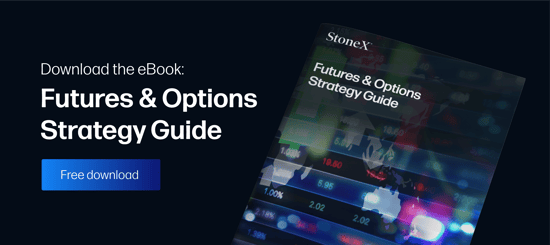The moving average convergence divergence (MACD) is a technical indicator used to identify points of trend exhaustion. Classified as a momentum oscillator, the MACD is a popular means for traders to identify overbought and oversold market conditions. When used correctly, it is a powerful tool for the execution of trend, reversal, and range trading strategies.
MACD 101: Form and Function
In practice, MACD stock and futures trading applications are diverse. However, before you can begin using this indicator, it’s helpful to become familiar with a few key components. Here’s a look at the basic anatomy of the MACD:
- The MACD line: The MACD line is a periodic moving average. It may be tailored to your desired parameters and is the basis for the study.
- The “signal” line: The signal line is an exponential moving average (EMA) of the MACD itself. It may be configured in a variety of ways, but one of the most common is the nine-period EMA. The signal line provides cues on when to buy or sell the asset in question.
- Histogram: The MACD histogram measures the momentum in a specific market. This is accomplished by examining the distance between the signal line and the MACD line. Larger bars equate to more momentum, whereas smaller bars point to slower market conditions.
When traders are using the MACD stock and futures indicator, it’s important to avoid becoming overwhelmed. The tool is user-friendly, updates automatically, and provides a visual depiction of evolving market conditions.
Convergence and Divergence
MACD users focus on two elements: convergence and divergence. Each indicates a different trend:
- Convergence: Convergence is the term used to reference when the MACD line and signal line come together. In this instance, the histogram’s bars shrink and hover near the “zero” line. Under a converging scenario, price action is losing momentum and may be poised to change direction.
- Divergence: On the other hand, divergence occurs when the MACD line and the signal line are moving apart. Accordingly, the histogram’s bars grow, indicating that momentum is picking up. Should divergence become apparent, MACD stock and futures traders may consider implementing a trend-based strategy.
Perhaps the most important aspect of the MACD is the crossover. A crossover takes place when the MACD line moves above or below the signal line. When this occurs, it’s a strong indication that a market is ready to be bought or sold. Generally, when the MACD line moves above the signal line, a buying opportunity is present; when the MACD line falls below the signal line, a selling opportunity may be setting up.
Want to Learn More About MACD Stock and Futures Trading?
As with most things in life, becoming proficient in using the MACD stock and futures indicator takes time and practice. However, with a bit of study and effort, any trader can get up to speed with this powerful technical tool in no time.



